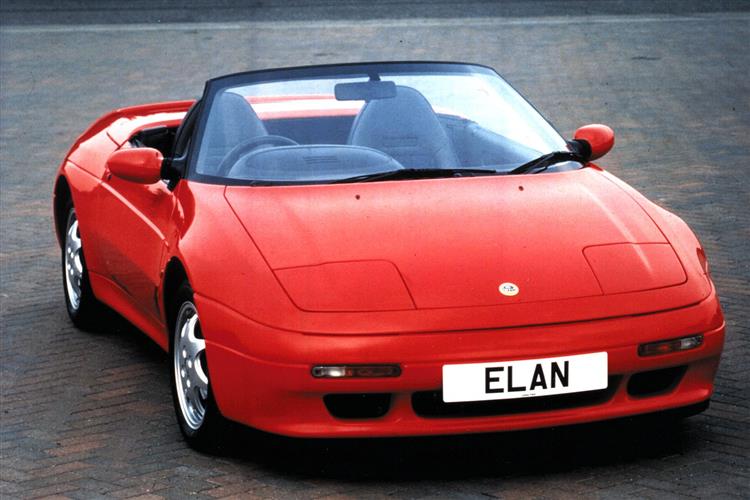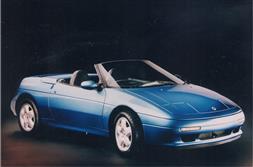LOTUS RE-POSITION (some text hidden) --NONE--
BY ANDY ENRIGHT
Introductionword count: 123
It's probably fair to say that the Lotus Elan is a something of a forgotten gem. Amid all the acclaim lavished upon its successor, the Elise, the front-wheel drive Elan has slipped down the back of the automotive sofa somewhat, waiting to be rediscovered by a new generation of sports car drivers Prematurely killed off by Lotus in 1995, the Elan is still probably the finest handling front-wheel drive car available, although Honda's Integra Type-R and Ford's Racing Puma could well be in with a shout. Perhaps the cutesy styling undersold this excellent drivers car, but the astute used buyer could pick up a bargain before the rest of the market remembers what a great car the Elan was and indeed still is.
Modelsword count: 11
Models Covered: (2dr roadster 1.6 petrol [base, SE Turbo, S2 Turbo])
Historyword count: 497
When working on the final stages of Project M100 in 1989, few staff at Lotus' Hethel factory realised that the name 'Elan' was about to be revived. Although carrying a significant weight of Norfolk heritage on its broad shoulders, the new Peter Stevens designed Elan looked to be well able to carry it off. Designed and built at a time when Lotus was cash-rich through its General Motors parent company, the Elan was a car that was engineered in a far more thorough manner than any new Lotus product before it. Two models were available at launch, both using a variant of an Isuzu engine, the 130bhp Elan 1.6, which retailed at £17,850 and the punchy 165bhp Elan SE Turbo, on sale for £19,850. Although GM's development finances flowed freely, a downturn in the European and US economies coincided with the Elan's launch and two-seater roadster sales were hit hard. GM's projections of 100 sales per month in the US soon began to look optimistic, and figures bear this out, heavily discounted Elans clocking up 40 sales per month was nearer the mark. When the figures were totted up it was realised that development costs had spiralled out of control, compounded by the fact that the Elan was both difficult and expensive to manufacture. The turbulent history of Lotus merits a book in itself, but when the American giant finally divested itself of the Norfolk company the Elan was virtually dead, the last of the Series 1 cars being built in July 1992. Of the 3855 Elans built to this point 96% were turbocharged SE models, indicating the normally aspirated car's relatively high pricing. New owner Bugatti had no plans for the Elan until a warehouse full of spare Isuzu engines was discovered in early 1994, large enough to warrant a limited run of Elans. Titled the Series 2, Bugatti sensibly did away with the normally aspirated option and fitted larger 16-inch wheels to give a more contemporary look, along with some minor suspension changes to accommodate the bigger rubberwear. The steering was retuned for a meatier feel and a catalytic converter was fitted to the Bosal exhaust system, reducing the engine's peak power by 10bhp to 155bhp. With increased build quality, improved interiors and a raft of small engineering fixes, the Series 2 models may not have been as quick as their predecessors, but represent a sounder ownership proposition for all but the spanner wielding, skinned-knuckle Sunday masochist. The S2 was more of a success than the early cars, and although it was finally axed in 1995, the license was sold to Kia who built around 1000 Kia Elans, although it was never officially imported to the UK. Widely viewed as a good product in a bad market, the Elan's poor financial showing was salvaged to a certain extent in the benefit it gave Lotus' consultancy work. As an advertisement for 'Handling By Lotus', the Elan may just have saved the Norfolk company from the chop.
What You Getword count: 206
The Elan is a pretty straightforward proposition. Ignoring the limited interest normally aspirated version, what do you get? A keen, buzzy Isuzu motor accompanied by the usual whoosh, whistle and chatter from the IHI turbocharger and intimate accommodation for two close friends. The interior is the usual late eighties/early nineties plastic dungeon, and although there are worse culprits than the Elan about, it is inside that the car shows its age. Whereas the exterior styling has aged really rather well, the interior doesn't look so clever. The first thing you'll notice is the combination of a very low seating position and a high scuttle and window line. Along with the disappearing snout and tail, bulky wiper blade and rear blind spot this makes visibility something less than perfect, hindering initial confidence. You also tend to slide down the seats, especially if the owner opted for leather trim. Despite the seemingly haphazard switchgear arrangement, it's easy to get used to, and the steering wheel and gearlever are perfectly placed with a pedal box that encourages natty heel-and-toe footwork. Luggage space is predictably dismal, and you'll need to bear in mind that ABS was only offered on the Series 2 cars, with no Elans being fitted with airbags.
To see the full road test text contact us on 0330 0020 227
Pictures (high res disabled)


|
Scoring (subset of scores)
Category: Convertibles
| Performance | |
| Handling | |
| Comfort | |
| Space | |
| Styling, Build, Value, Equipment, Depreciation, Handling, Insurance and Total scores are available with our full data feed. | |



